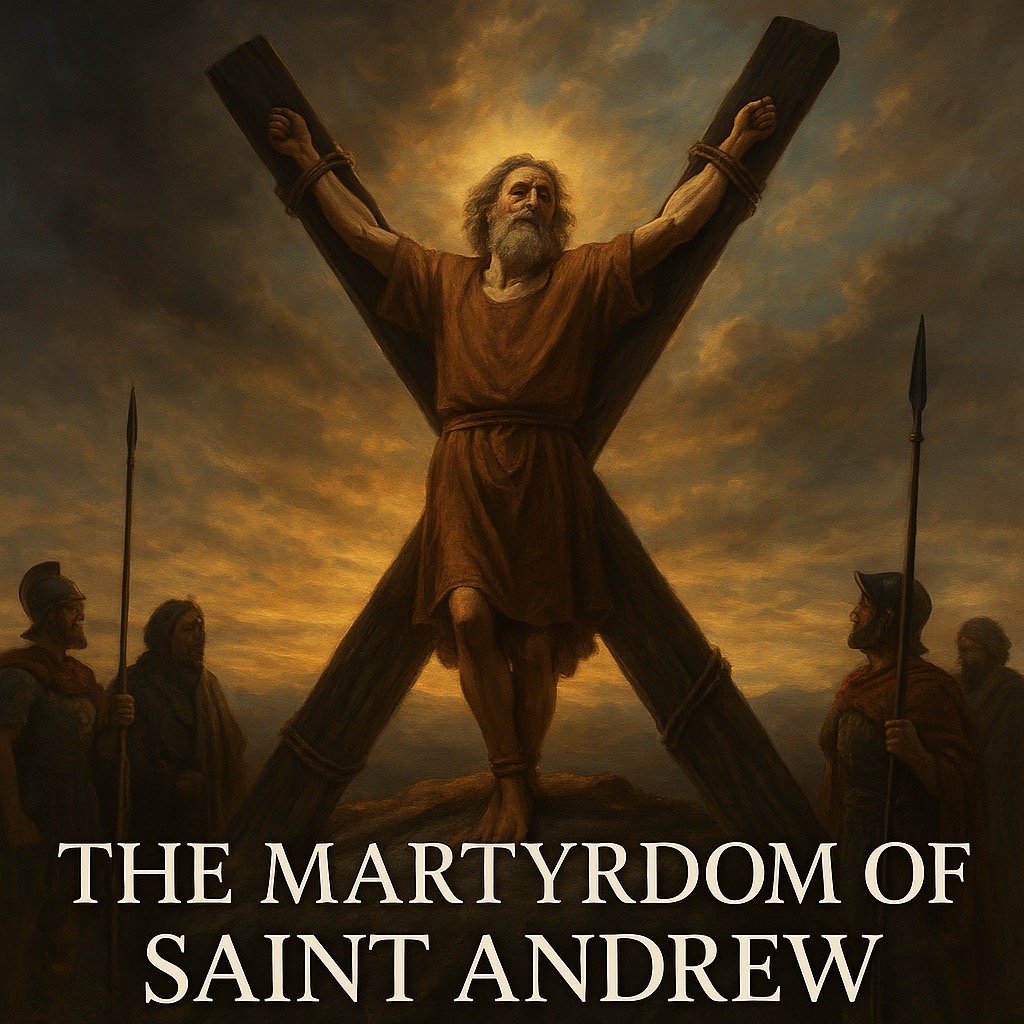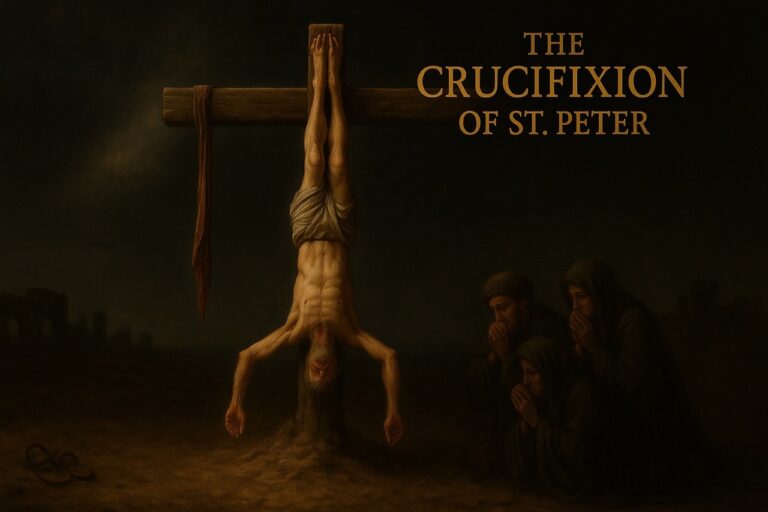The martyrdom of Saint Andrew stands as one of the most compelling early proofs of the resurrection of Jesus Christ. He wasn’t a legend, nor was his death the result of vague ideology. Andrew died because he refused to deny a person — someone he had walked beside, listened to, and believed in with all his heart: the risen Son of God.
As the first disciple to follow Jesus, Andrew’s journey began with a simple act of faith. But it ended with a bold refusal to recant that faith, even when faced with crucifixion. His final request — to be crucified on an X-shaped cross because he felt unworthy to die as his Master did — reveals the depth of his humility and conviction.
Unlike Peter, Andrew didn’t speak often in the Gospels. He didn’t write letters or perform public miracles that we know of. But what he did do was endure — quietly, faithfully, and to the end. That kind of witness doesn’t just inspire; it testifies.
In a world filled with skeptics and distractions, Saint Andrew’s death reminds us that Christianity didn’t rise on myth or manipulation. It spread because men like Andrew were willing to die for what they saw — and more importantly, who they saw.
💀 They didn’t die for a lie.
See how all of Jesus’s disciples died — and what it proves.

👣 Who Was Saint Andrew to Jesus?
Before following Jesus, Saint Andrew was already searching for truth. He worked as a fisherman in Bethsaida, a small town near the Sea of Galilee, and he was the brother of Simon Peter. But unlike Peter, Andrew had already joined a spiritual movement — he was a disciple of John the Baptist, drawn to John’s bold call for repentance and preparation for the coming Messiah.
Then everything changed.
While standing with John near the Jordan River one day, Andrew heard him proclaim, “Behold, the Lamb of God!” (John 1:36). That was all he needed. Without delay, Andrew left John and began following Jesus. This moment made him the first recorded disciple of Christ — the first to believe, and the first to act.
Andrew spent the rest of that day with Jesus. The next morning, he went to find his brother Peter and exclaimed, “We have found the Messiah!” (John 1:41). In doing so, Andrew became not only the first follower of Jesus… but also the first evangelist.
Although Andrew wasn’t part of Jesus’ closest inner circle (Peter, James, and John), his name appears at several critical moments in the Gospels. He’s the one who introduced the boy with five loaves and two fish — sparking the feeding of the five thousand (John 6:8–9). He welcomed Gentile seekers who wanted to meet Jesus (John 12:20–22). He even sat privately with Christ on the Mount of Olives, asking about the end times (Mark 13:3).
Andrew may have lived in the background, but he was never passive. His quiet faith, deep curiosity, and bold initiative paint a portrait of a man who constantly brought people to Jesus — from his own brother to total strangers. He followed truth wherever it led, and he never looked back.
📖 What Scripture Says About Saint Andrew
Saint Andrew appears in all four Gospels and in the book of Acts:
- John 1:40–42 — He follows Jesus and brings Peter to Him.
- John 6:8–9 — He finds the boy with loaves and fish during the miraculous feeding.
- John 12:20–22 — He helps Gentile seekers meet Jesus.
- Mark 13:3 — He joins the disciples asking about the end times.
- Acts 1:13 — He remains with the apostles after Jesus’ ascension, praying and waiting for the Holy Spirit.
Though he wrote no epistles and spoke few recorded words, Andrew’s consistent presence in the Gospel story shows deep faith and quiet leadership.
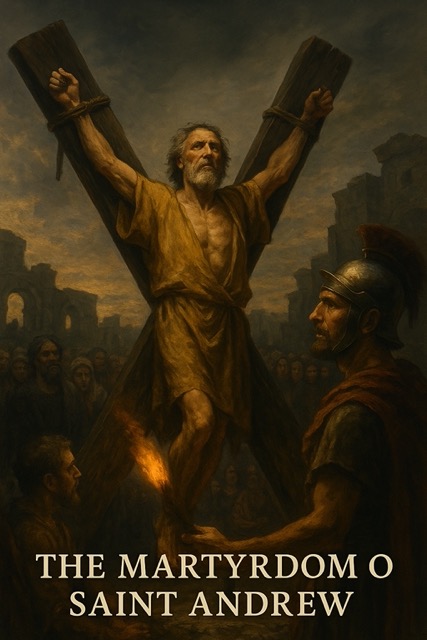
⚔️ Why Was Saint Andrew Killed?
After Jesus’ resurrection and ascension, Saint Andrew became a missionary. He traveled through Asia Minor, Scythia, and finally into the region of Achaea (modern-day Greece). His message was simple but bold: Jesus is the risen Lord. That proclamation, however, was dangerous in Roman-occupied territories.
According to tradition, Andrew converted many — including the wife of the Roman governor, Aegeas. When Aegeas demanded that she recant, she refused. Enraged, he arrested Andrew and commanded him to deny Christ. Andrew would not. His refusal sealed his fate.
Saint Andrew was condemned for spreading a faith that defied both emperor worship and pagan religion. His crime was loyalty to Jesus.
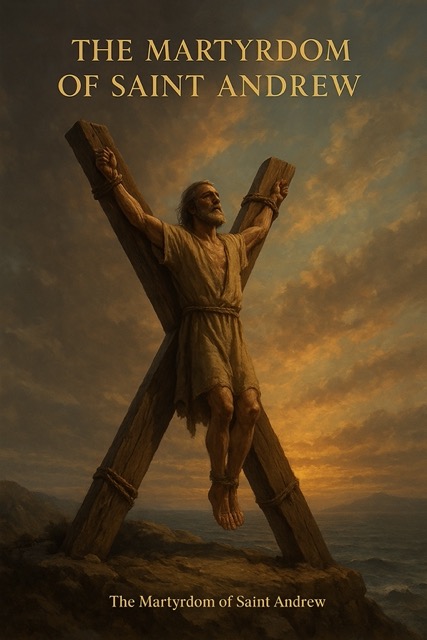
🩸 How Did Saint Andrew Die? (Tradition + Sources)
Saint Andrew was crucified in the city of Patras around 60 AD. Unlike Jesus, he was not nailed to the cross, but bound with ropes. This prolonged his suffering — yet also gave him more time to speak of Christ.
Tradition says Andrew requested a different kind of cross. Feeling unworthy to die as his Lord had, he asked to be crucified on a diagonal, X-shaped structure. Today, this form is called “Saint Andrew’s Cross.”
Crowds reportedly gathered to hear Andrew preach even while dying. Some begged for his release. But Andrew, with unwavering peace, remained faithful to the end. According to ancient sources like the Acts of Andrew, his final words were a prayer of joy.
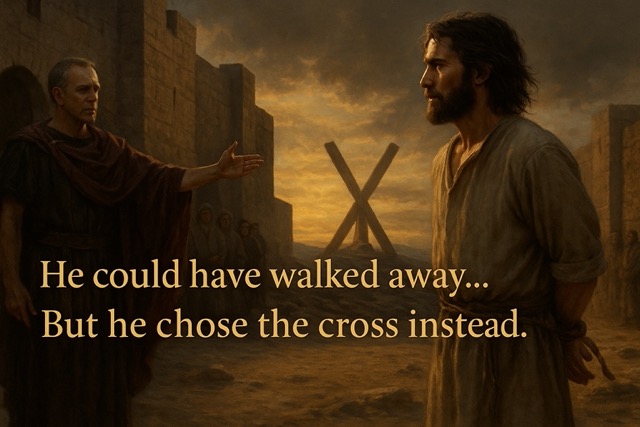
🚪 Could Saint Andrew Have Escaped?
Yes. Andrew could have saved himself.
He had every opportunity to flee or recant. The Roman governor even offered him mercy — if only he would deny Jesus. But Andrew knew the truth. He had walked with Christ. He had seen the miracles. He had no doubt in the resurrection.
To Andrew, escape meant betrayal. And so he chose the cross.
His decision mirrors what we see in all the apostles: they didn’t die for a theory. They died for a person they knew. That makes the martyrdom of Saint Andrew powerful proof of their conviction — and of the truth of the Gospel.
👁️ What Does Saint Andrew’s Death Prove?
The martyrdom of Saint Andrew confirms the sincerity of the early disciples. He didn’t die for power or influence — he died in chains, suffering, in a foreign land. His death proves he believed what he preached.
It also fulfills what Jesus foretold:
“You will be hated by everyone because of Me.”
— Matthew 10:22
Andrew’s death was not a defeat. It was a declaration: Christ is risen.

📖 Spiritual Reflection: What We Learn
Saint Andrew reminds us that faith is often quiet — but powerful.
He wasn’t loud like Peter or poetic like John. Yet his actions brought people to Jesus. His loyalty outlasted threats. His love for Christ remained unshaken through torture.
We live in a world that avoids suffering. But Andrew embraced the cross. He shows us that faith isn’t proven by comfort — it’s proven by what we’re willing to endure.
So ask yourself:
Would I still follow Jesus if it cost me everything?
📚 Internal Related Reading
- Peter’s Martyrdom: From Denial to Glory
Andrew’s brother also chose the cross. This deep-dive shows how Peter’s transformation confirms the truth of the resurrection. - Martyrdom of Jesus’ Disciples (Overview)
Why did they all die for what they saw? This article reveals the cost—and courage—of the earliest eyewitnesses. - Historical Evidence of Jesus
Was Jesus real? This breakdown explores how martyrdom, manuscripts, and historical records all point to His existence. - Prophecies of Jesus Fulfilled in Scripture
With 351 fulfillments, including Andrew’s mission and martyrdom, this article shows how Jesus fulfilled the entire Old Testament arc. - Prophecies of Jesus’ Resurrection
Which verses foretold the third day? Discover the Old Testament clues that Andrew believed were fulfilled. - Messianic Prophecies of Jesus’ Suffering and Crucifixion
From Isaiah 53 to Psalm 22, explore how the ancient texts described Christ’s death in stunning detail.
🌐 External Related Reading
- The Acts of Andrew – Early Christian Writings
A detailed apocryphal text describing Andrew’s missionary work and his dramatic crucifixion.
earlychristianwritings.com/text/actsandrew.html - Cathedral of Saint Andrew, Patras – Wikipedia
This Greek cathedral preserves relics of the apostle and honors the traditional site of his death.
en.wikipedia.org/wiki/Cathedral_of_Saint_Andrew,_Patras - Patras Celebrates Its Patron Saint – OrthoChristian
Read how modern-day believers in Greece still commemorate Andrew’s martyrdom with annual processions.
orthochristian.com/157582.html - The Martyrdom of Saint Andrew – Cleveland Museum of Art
View a classic artistic interpretation of Andrew’s crucifixion, filled with emotional realism.
clevelandart.org/art/1916.784 - Andrew the Apostle – Wikipedia
A broad, referenced overview of Saint Andrew’s life, legacy, and significance across Christian history. en.wikipedia.org/wiki/Andrew_the_Apostle

🙋♂️ Frequently Asked Questions About the Martyrdom of Saint Andrew
🧱 Historical Context & Evidence
❓ Where did Saint Andrew die, and when?
Saint Andrew was martyred around 60 AD in Patras, Greece. His execution took place under the Roman governor Aegeas, who opposed Andrew’s evangelism and conversions.
❓ Are there any writings or documents about Saint Andrew’s death?
Yes. The Acts of Andrew is an early Christian apocryphal text that details his missionary journeys and death. While not part of the biblical canon, it reflects early Christian memory and tradition.
❓ Is there any physical evidence of Saint Andrew’s life or martyrdom?
Relics believed to belong to Saint Andrew are enshrined in Patras (Greece), Amalfi (Italy), and Edinburgh (Scotland). The Cathedral of Saint Andrew in Patras was built near the site of his death.
❓ Who was the Roman governor that sentenced Andrew to death?
Tradition identifies the governor as Aegeas. He condemned Andrew after the apostle converted his wife to Christianity and refused to stop preaching.
❓ Is Saint Andrew mentioned in historical or Roman records?
While direct Roman documentation is limited, early Christian sources such as Eusebius, Hippolytus, and the Acts of Andrew preserve his story within broader Church tradition.
✝️ Theological Significance
❓ What is the significance of Saint Andrew’s martyrdom?
Andrew’s martyrdom is considered compelling evidence of the apostles’ belief in the resurrection. He died without renouncing Jesus — not for a theory, but for someone he knew and followed.
❓ How is Saint Andrew connected to the resurrection of Jesus?
Andrew’s fearless preaching of Christ risen — even unto death — strongly suggests that he believed in the literal resurrection. His death supports the claim that the apostles were eyewitnesses.
❓ Why is martyrdom considered proof of the resurrection?
The apostles, including Andrew, had every reason to save themselves by recanting — but none did. Their willingness to die implies they were convinced by something they saw: the risen Jesus.
⚔️ The Method of Execution
❓ Why was Saint Andrew crucified on an X-shaped cross?
According to tradition, Andrew requested a diagonal cross (now called Saint Andrew’s Cross) because he felt unworthy to die in the same way as Jesus. This form later became his lasting symbol.
❓ Was Saint Andrew nailed or tied to the cross?
Unlike Jesus, Andrew was bound with ropes instead of nails. This prolonged his suffering and gave him more time to preach while dying.
❓ What did Saint Andrew say while dying?
The Acts of Andrew record that he praised the cross and spoke openly about Christ during his final hours. Some sources claim he continued preaching for two full days while bound.
👣 Life Before Martyrdom
❓ What did Saint Andrew do before following Jesus?
Andrew was a fisherman from Bethsaida. He was also a disciple of John the Baptist before immediately following Jesus upon hearing Him called “the Lamb of God” (John 1:35–40).
❓ Was Saint Andrew really the first apostle to follow Jesus?
Yes. He is known in the Eastern Church as the Protokletos — the “First-Called.” He believed early and brought Peter (his brother) to Jesus.
❓ What is Andrew’s role in the Gospels?
Andrew helped connect others to Jesus. He introduced Peter to Christ (John 1), presented the boy with the loaves and fish (John 6), and brought Greeks to meet Jesus (John 12).
❓ Was Saint Andrew mentioned after the resurrection?
Yes. He appears in Acts 1:13 among the apostles gathered in the upper room after Jesus’ ascension — waiting for the Holy Spirit.
🌍 Legacy & Relevance Today
❓ How is Saint Andrew remembered today?
He is the patron saint of several nations, including Scotland, Russia, and Greece. His feast day is celebrated on November 30th, especially in Orthodox and Catholic traditions.
❓ Why is Saint Andrew’s Cross on the Scottish flag?
According to legend, Saint Andrew appeared in a vision before a battle in Scotland. His X-shaped cross became the symbol of Scottish identity and is featured on their national flag.
❓ What lessons can Christians learn from Saint Andrew’s martyrdom?
Andrew models humility, evangelism, and courage. He brought others to Jesus quietly but died with boldness. His story challenges believers to stand firm in faith — even when it costs everything.
❓ How can Saint Andrew’s story inspire Christians today?
His quiet beginning and courageous end show that even ordinary people can do extraordinary things through Christ. Andrew reminds us that obedience, not popularity, defines true discipleship.

